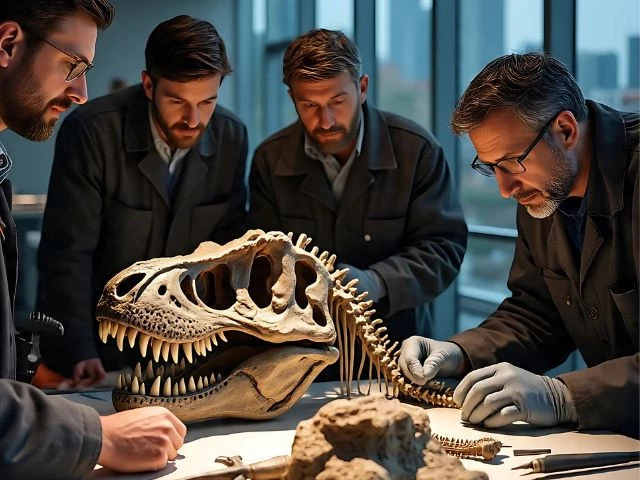'Dragon Prince' fossil is closest known ancestor of T rex, researchers say
"Dragon Prince of Mongolia" was identified from two partial skeletons discovered during fossil expeditions in Mongolia

Scientists have uncovered a new species of dinosaur that they say rewrites the evolutionary history of tyrannosaurs — and the discovery was hiding in plain sight for over 50 years inside a Mongolian museum.
Named Khankhuuluu mongoliensis, meaning "Dragon Prince of Mongolia", the species was identified from two partial skeletons originally discovered in the early 1970s during Soviet-era fossil expeditions in Mongolia.
These fossils had been stored and previously classified as Alectrosaurus, an already known species, until a closer look revealed distinctive tyrannosaur features.
Now recognised as the closest known ancestor of all tyrannosaurs, Khankhuuluu is estimated to be 86 million years old. It fills a crucial gap in the family tree of these formidable predators, which include the legendary Tyrannosaurus rex.
"This discovery shows us that, before tyrannosaurs became the kings, they were princes," said Prof Darla Zelenitsky, a palaeontologist at the University of Calgary in Canada. She co-authored the study, published Wednesday in the journal Nature.
The lead researcher, PhD student Jared Voris, described the species as a transitional form. "They were these really small, fleet-footed predators that lived in the shadows of other apex predatory dinosaurs," he said.
Khankhuuluu bridges the evolutionary gap between those earlier, nimble hunters of the Jurassic and the massive, bone-crushing tyrants like T. rex that ruled during the Late Cretaceous.
The fossil shows early signs of skull features that would later define tyrannosaurs’ dominance, including adaptations in the nasal bone structure that helped develop powerful bite forces.
"We see features in its nasal bone that eventually gave tyrannosaurs those very powerful bite forces," Voris said.
Those powerful jaws would later allow species like T. rex to tackle larger prey and even crush bone, a hallmark of their predatory success.
The species name, Khankhuuluu, combines Mongolian words to mean “Dragon Prince”, a nod to its ancient roots and its evolutionary status. "'Prince' refers to this being an early, smaller tyrannosauroid," Zelenitsky explained.
Tyrannosauroids are a superfamily of bipedal carnivorous dinosaurs. Although their later descendants grew into some of the largest predators to walk the Earth, their earliest members were much smaller and more agile.
The discovery also underscores how tyrannosaurs migrated and adapted. During the Late Cretaceous, land bridges between Siberia and Alaska enabled dinosaur species to move between Asia and North America.
"That movement back and forth between the continents basically pushed the evolution of different tyrannosaur groups," Voris said.
The find further highlights the value of museum collections, where unrecognised fossils may still hold the key to major discoveries.
"I remember getting a text from him — that he thought this was a new species," recalled Prof Zelenitsky.




























COMMENTS
Comments are moderated and generally will be posted if they are on-topic and not abusive.
For more information, please see our Comments FAQ